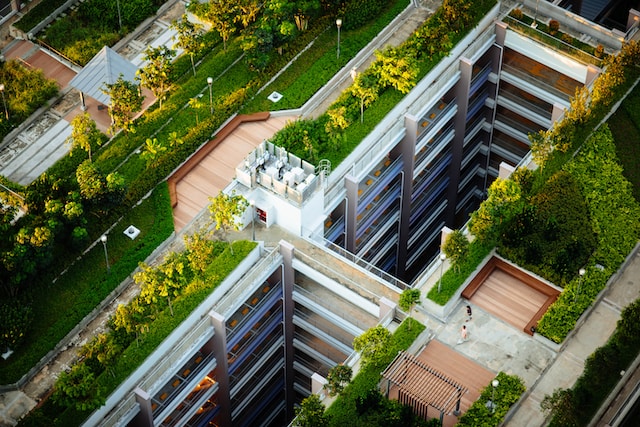Landscaping with native plants is a sustainable and eco-friendly way to create beautiful outdoor spaces while preserving local ecosystems. Native plant landscaping is gaining popularity as people recognize the benefits of incorporating plants that are well-adapted to the local environment. In this article, we’ll explore the advantages of using native plants, tips for designing a native plant landscape, and how to maintain a sustainable outdoor space.
Why Native Plants Are Beneficial
Using native plants in landscaping has many benefits, including:
- Supporting local ecosystems
- Reducing water usage
- Promoting biodiversity
- Providing habitats for native wildlife
- Reducing the need for pesticides and fertilizers
Supporting Local Ecosystems
Native plants have evolved over time to thrive in the local climate and soil conditions. They provide essential habitats for local wildlife, including birds, bees, butterflies, and other pollinators. By using native plants in your landscaping, you are helping to support the local ecosystem and promote biodiversity.
Reducing Water Usage
Native plants are well-adapted to local rainfall patterns and soil conditions. They require less water than non-native plants, which can help to conserve water resources and reduce water bills.
Promoting Biodiversity
By using a variety of native plants in your landscape design, you can create a diverse and resilient ecosystem. This can help to promote biodiversity and provide habitats for a range of species.
Providing Habitats for Native Wildlife
Native plants provide essential habitats for local wildlife, including food sources, nesting sites, and shelter. By using native plants in your landscaping, you can help to support local wildlife populations.
Reducing the Need for Pesticides and Fertilizers
Native plants are adapted to local soil conditions and pests, which means they are less susceptible to diseases and pests. This can reduce the need for pesticides and fertilizers, which can be harmful to the environment.
Tips for Designing a Native Plant Landscape
Designing a native plant landscape requires careful planning and consideration of the local environment. Here are some tips to get started:
Research Local Plants
Research the native plants that grow in your area. Consider factors such as soil type, sunlight exposure, and rainfall patterns. Choose plants that are well-suited to the local climate and conditions.
Create a Planting Plan
Create a planting plan that takes into account the size and shape of your outdoor space. Consider the height and spread of each plant to ensure they have enough room to grow and thrive.
Group Plants by Similar Needs
Group plants by their water and sunlight needs. This can help to reduce water usage and ensure that each plant gets the appropriate amount of sunlight.
Incorporate Hardscaping
Incorporate hardscaping elements, such as paths, retaining walls, and seating areas, into your design. This can help to create structure and visual interest in your outdoor space.
Consider Maintenance Needs
Consider the maintenance needs of each plant when designing your landscape. Choose plants that are easy to maintain and require minimal pruning and watering.
How to Maintain a Sustainable Native Plant Landscape
Maintaining a sustainable native plant landscape requires ongoing care and attention. Here are some tips to keep your landscape healthy and thriving:
Water Wisely
Water your plants deeply and infrequently to encourage deep root growth. This can help to reduce water usage and promote plant health.
Mulch Your Plants
Mulch your plants with organic materials, such as shredded leaves or bark. This can help to retain moisture, reduce weed growth, and add nutrients to the soil.
Compost Organic Waste
Compost your organic waste, such as leaves, grass clippings, and food scraps. This can provide valuable nutrients to your plants and reduce waste.
Use Natural Pest Control Methods
Use natural pest control methods, such as companion planting and beneficial insects, to control pests and diseases. Avoid using pesticides and herbicides, which can be harmful to wildlife and the environment.
Practice Integrated Pest Management
Practice integrated pest management by monitoring your plants for pests and diseases and taking action as needed. This can help to reduce the need for pesticides and herbicides.
Prune Regularly
Prune your plants regularly to promote healthy growth and prevent disease. Be sure to use sharp, clean tools and avoid over-pruning.
Remove Invasive Plants
Remove invasive plants from your landscape to prevent them from spreading and harming the local ecosystem.
FAQs
- What are some examples of native plants that can be used in landscaping? Some examples of native plants include wildflowers, grasses, shrubs, and trees. Examples vary by region, so it’s important to research the plants that are native to your area.
- Can I still have a beautiful garden with native plants? Yes! Native plants can create a beautiful and diverse landscape that supports local wildlife and ecosystems.
- Will using native plants in my landscaping save me money? Using native plants can help to reduce water usage and the need for pesticides and fertilizers, which can save you money on your water bill and landscaping costs.
- How can I learn more about native plants and sustainable landscaping? Check with your local garden center or nursery for information on native plants and sustainable landscaping practices. You can also research online resources from reputable sources such as your state’s department of natural resources.
- What are some other sustainable landscaping techniques? Other sustainable landscaping techniques include rainwater harvesting, using permeable paving, and incorporating edible plants into your landscape design.
Conclusion
Native plant landscaping is a sustainable and eco-friendly way to create beautiful outdoor spaces while preserving local ecosystems. By using native plants in your landscaping, you can support local wildlife and promote biodiversity, reduce water usage and the need for pesticides and fertilizers, and create a diverse and resilient ecosystem. With careful planning and maintenance, a native plant landscape can provide beauty and sustainability for years to come.












